In the practice of an SEO specialist, analyzing a decline in organic traffic can often become a complex task. It requires quick, accurate solutions, but the reasons behind the decrease can vary, and there’s often not enough time to find them.
When I came across Aleyda Solis’ article “7 Key Questions and Tools to Assess Your Site Organic Search Rankings Drops“, it immediately caught my attention. Aleyda brought up a really important topic in SEO that requires careful attention in SEO. While the article was published some time ago, its insights remain highly relevant. She offers valuable tips and tools that help approach traffic analysis from new perspectives.
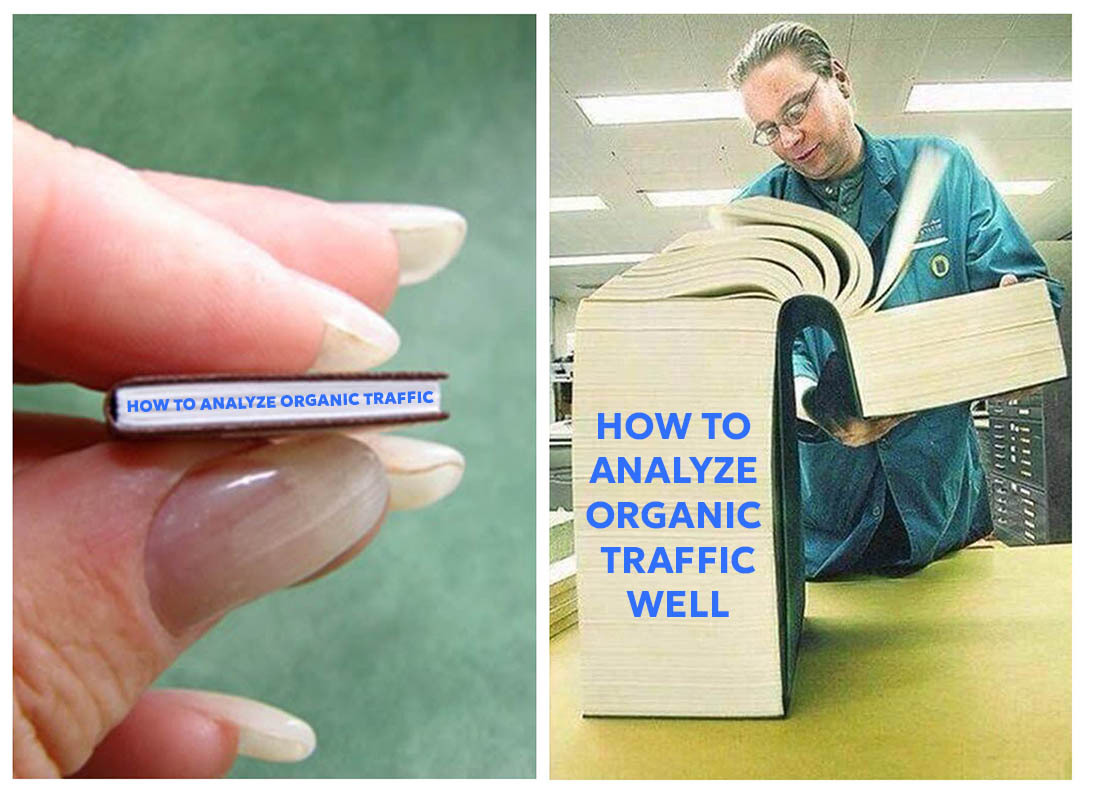
In this article, I will explore these seven questions, share my practical observations, and present my approach to traffic analysis. I hope this material proves useful and helps you uncover insights where you least expect them, with minimal effort.
- Aleyda’s seven key questions from the article
- Not all declines are the same – diagnosing problems with organic traffic
- Why is organic traffic analysis often overlooked?
- My case: What SEO traffic analytics means to me
- Google Search Console’s role in analytics
- A fresh take on analyzing organic traffic with GSC data
- What’s next? A new look at traffic monitoring in Google Search Console
Aleyda’s seven key questions from the article
- Is the drop in organic traffic related to Google Search updates or significant content changes?
This question helps you determine if Google’s algorithmic changes or your updates have caused a drop in visibility. - Which queries and pages decreased (as well as increased) the most?
Segmenting your traffic by query and page lets you see specific drop and growth points. - Are decreases or increases in traffic related to changes in positions or impressions and/or CTR?
It allows you to understand what exactly influenced the decline: falling positions, decreased clickability, or decreased visibility of queries. - Did the drop in traffic happen due to decreased visibility in SERPs?
Loss of visibility in search engine functionality blocks, such as snippets or carousels, can cause a dramatic drop in traffic. - Which competitors’ pages have risen in the rankings while yours have declined?
This question leads to analyzing the competitors who beat you in the search engine rankings. - Which competitors’ pages are getting more visibility for the query group where your pages have lost ranking?
Identifying key competitors in segments where you have lost ground helps you understand their strategy. - Which competitors’ pages are getting the most clicks for queries where your pages have declined?
Analyzing pages that have driven traffic helps you understand where you are losing ground.
These questions offer a structured approach to traffic analysis. Aleyda’s article gives an in-depth view of the issue, and I highly recommend reading it for more helpful insights.
Not all declines are the same – diagnosing problems with organic traffic
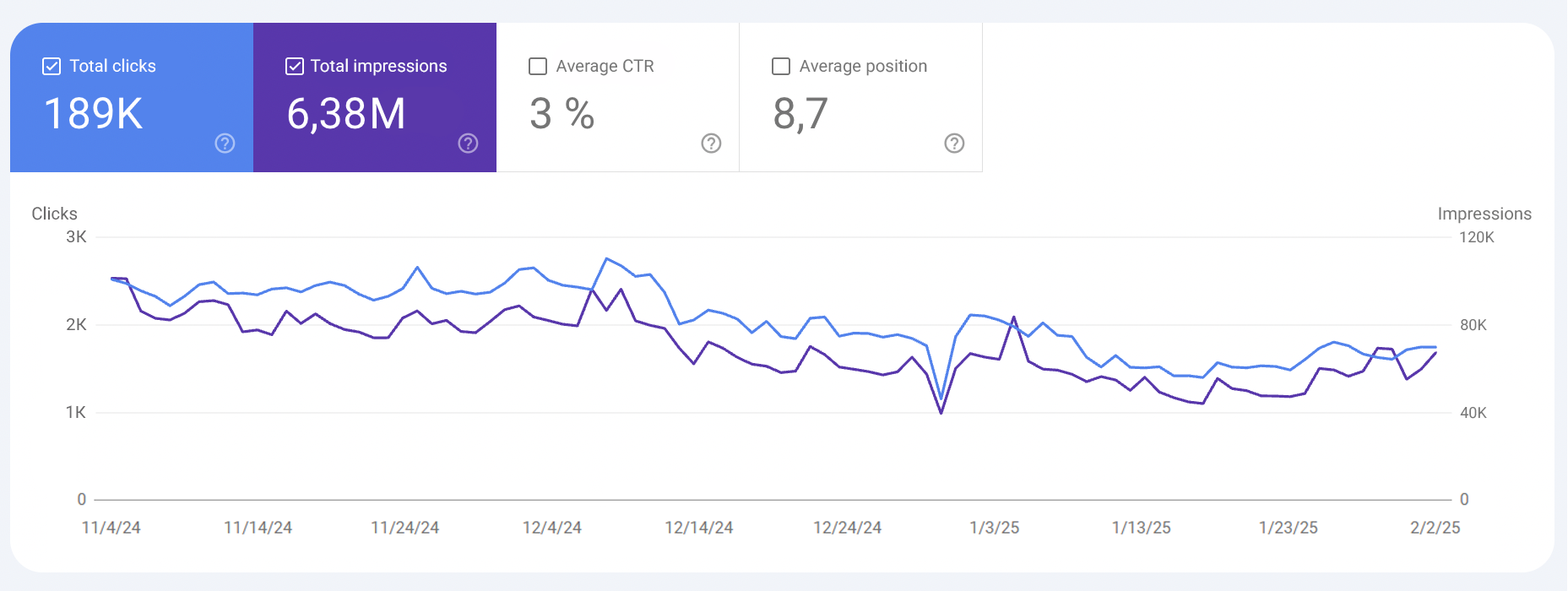
A drop in traffic is always an alarming signal, but its nature and magnitude can differ. Before looking for causes, it’s essential to qualify the drop type to make the correct hypotheses. Here are a few basic scenarios:
- Overall smooth fall. For example, when traffic gradually decreases over months.
- Overall sharp drop. A sudden, dramatic decline in traffic, often caused by algorithm updates or technical issues.
- A point drop against a background of general growth or stagnation. The loss of positions on individual pages or queries often causes it.
- Hidden Fall. A rise in branded, untargeted, or bot traffic masks a decrease.
- Traffic Redistribution. This happens when users shift to other channels or resources, leading to a decline in traffic from your site.
- Falling because of declining demand or outdated semantics. This occurs when certain search queries lose relevance, and new demand hasn’t yet formed to replace it.
This is far from an exhaustive list—there are many possible causes for traffic drops. However, identifying the right area and scale of the problem is crucial for pinpointing the causes. Only by doing so can we form accurate hypotheses and draw reliable conclusions.
That’s why traffic analytics is essential—it will always be a key element of SEO.
Why is organic traffic analysis often overlooked?
Despite the importance of traffic analysis, it is often overlooked. Why? Here are the main reasons:
- Unpredictable results. Analytics is a process with no guaranteed outcome. You may not know what you’ll find, how long it will take, or how useful the results will be. For professionals working by the hour, predicting time and resource costs is especially challenging. Sometimes, a few hours isn’t enough; other times, identifying patterns can take a day or more. With limited resources, this becomes a luxury.
- Working overtime and personal time. Responsible professionals often work during personal time to finish what they couldn’t during the day. While this helps achieve results, it can lead to burnout, personal conflicts, and the need to find ways to save time in the future.
- Unprofitability. Freelancers often struggle with managing their time effectively, especially when analytics takes more time than their project fees justify. This creates a dilemma: raise prices, outsource analytics to cheaper specialists (which risks quality), or, in extreme cases, leave freelancing or consulting altogether. While some freelancers manage to set clear timelines and prices upfront, this is rare, especially when dealing with fixed company budgets. Turning down projects is an option, but it risks unpaid work and damaging reputation, making it a constant challenge.
- Technical difficulties. The sheer volume of data on large projects can be overwhelming. SEO specialists may need to learn programming languages like Python, work with databases and connectors, or handle complex integrations. However, they were hired for SEO, not for SQL or coding. While SEO analysts in larger companies can manage this, what about the rest?
- Not knowing what to look for. When a new SEO specialist takes over an older, potentially neglected site, they often struggle to identify growth opportunities. Going through the checklist of issues can feel overwhelming, which leads to a halt in further analysis.
- Sales challenges. If analytics is needed for a commercial proposal, it may be cut because of the risk that the project will not be sold. This leads to plans based on basic metrics, which do not take into account important details.
- Conflict of business expectations. To some businesses, analytics may seem unnecessary—it takes time, and results are unpredictable. Convincing stakeholders of its value, in terms of money and benefits, can be a hard sell.
It is only a review of the key issues I have observed in my practice and that of my colleagues. There are too many factors that influence whether analytics becomes a priority for a professional.
My case: What SEO traffic analytics means to me
A few years ago, when I managed SEO production, sales, and training at a large agency, my role combined those of an entrepreneur, analyst, SEO specialist, salesperson, and mentor.
Traffic analytics played a crucial part in each of these areas. The projects we worked on were often complex and large-scale, so relying solely on best practices and checklists wasn’t enough.
Each recommendation was written manually: it included not only the terms of reference but also analytical data, hypothesis, and projected results in numbers. Any changes were agreed upon by product teams, defended in front of clients, and included in the developers’ plans only if there was a justified benefit.
On the one hand, clients demanded error-free work and tangible results. On the other, all of this had to bring income to cover the costs of maintaining a team of 17 SEO specialists while also ensuring profit for the company. Finding a balance between these tasks was not easy.
Even at the sales stage, in-depth traffic analysis was necessary to determine the best approach:
- how quickly the site could bring results,
- what kind of results could be expected over time, based on current metrics,
- what changes would be necessary,
- how those changes would align with the client’s real capabilities.
It was not just an SEO check but an in-depth SEO analysis with elements of strategic planning even before the contract was awarded.
At some point, the analytics I loved became a complex, energy-consuming process and a constant headache. The team needed to work together cohesively and understand the tasks at hand, even without my constant supervision. I couldn’t manage everyone’s tasks individually.
Then I started spending more time optimizing time and resources, improving the self-sufficiency of SEO specialists, and finding ways to:
- Make traffic analytics more predictable in terms of results.
- Ensure the resources spent by the team are well-invested.
- Make it easy to onboard new specialists quickly and efficiently so they can deliver more results and make fewer mistakes.
- Free up more experienced employees from routine tasks that can be automated to reduce the cost of work on projects.
My strategies and solutions proved successful. I was able to maintain and develop all areas of the team for several years. Over time, my focus shifted toward developing tools to help other SEO specialists tackle the same challenges I faced. When I joined the Buddler team, I saw an opportunity to bring my experience and ideas to the product. Today, Buddler helps SEO professionals find personalized growth points faster, simplify organic traffic analytics processes, and focus on the actions that deliver results.
Google Search Console’s role in traffic analysis
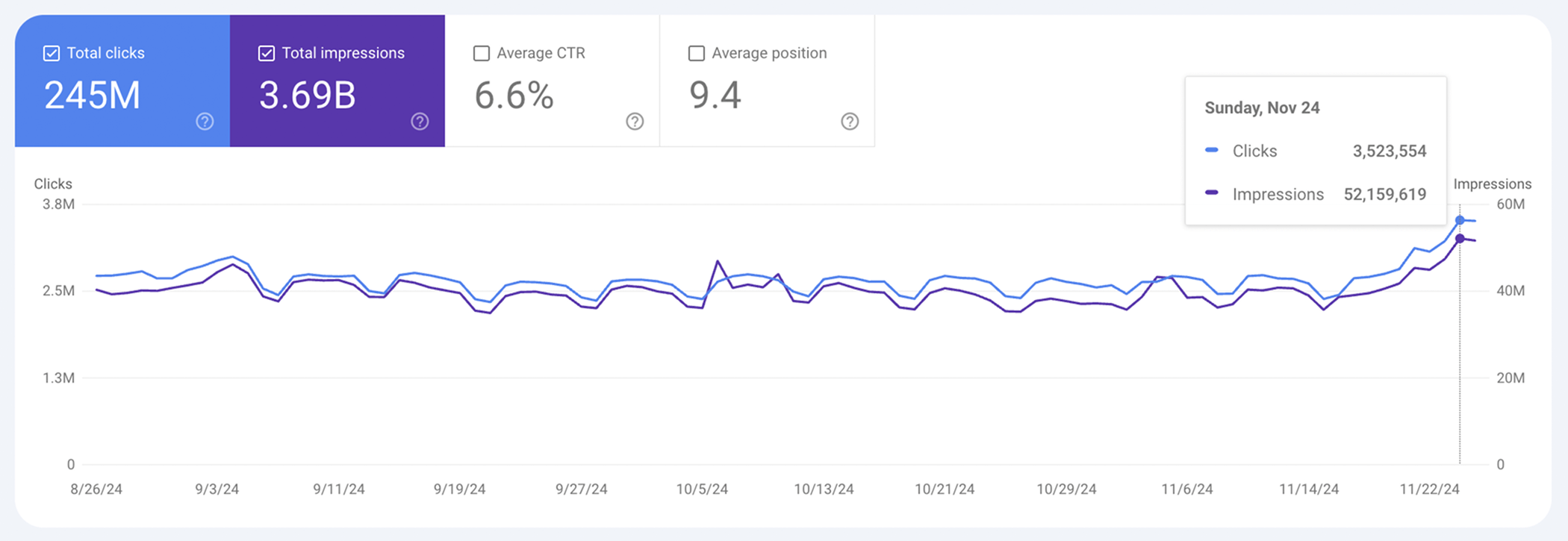
In her article, Aleyda mentions Google Search Console (GSC) as one of the key tools for analyzing traffic drops. I completely agree: GSC is a fundamental data source for an SEO specialist, essential for nearly any kind of analysis.
It’s the starting point for traffic analysis; without it, it’s hard to create accurate hypotheses. However, while GSC is valuable, manually working with large amounts of data can be difficult and time-consuming, especially if you need to identify patterns quickly or find growth points.
That’s why I decided the best solution was to start with GSC and create a traffic audit in Buddler that helps SEOs analyze data from the tool effectively.
Feel free to email me at Liz@buddler.com or on Linkedin if you’re facing any challenges with GSC or data analysis. I’d be happy to help or even suggest potential solutions for development. We’re always open to feedback, ideas, and collaboration!
A fresh take on analyzing organic traffic with GSC data
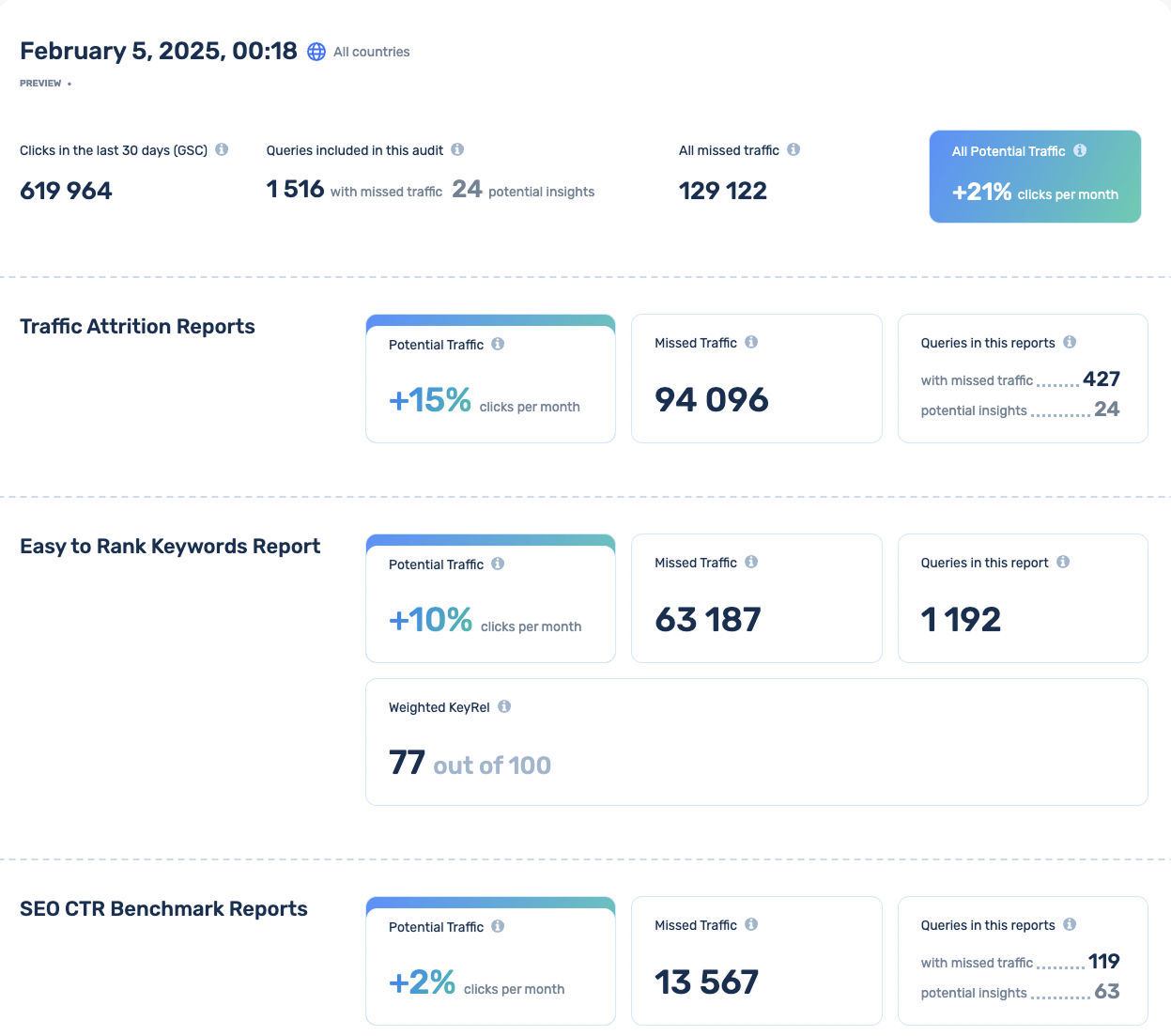
When we developed Buddler, we aimed to create solutions that personally identify growth opportunities and non-obvious problem areas for each site rather than just displaying some data like many other tools or parsers.
Buddler is based on the idea of SEO Growth Hacking—an approach for those constantly looking for new ways to grow, not limiting themselves to best practices and striving to take a broader look at websites’ possibilities. This approach helps find quick and effective ways to increase traffic, which harmonizes with implementing global plans and strategies.
Buddler’s flagship product is SEO Analytics Reports – an audit of organic traffic based on Google Search Console data. For the convenience of users, the audit is divided into three independent reports:
- Traffic Attrition Report: If you’re noticing a downward trend in traffic or suspect one is one but don’t understand where it’s happening, this report will help you identify your site’s ‘dark areas.’ Analyzing current performance against past months’ results is a quick and easy solution. It allows you to detect pinpoint or global query drops based on position changes and highlight places to look at to recover lost traffic.
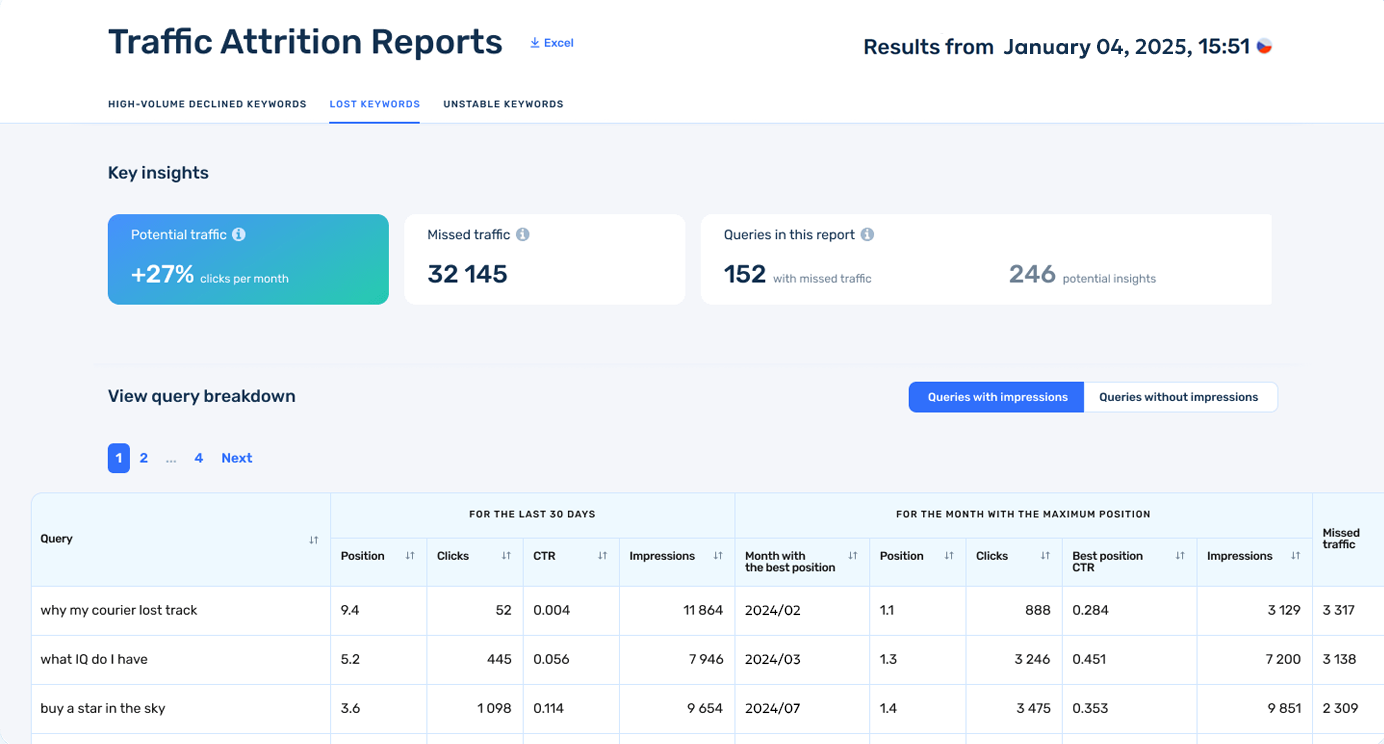
- Easy-to-Rank Keywords Report: When time is short and you need results quickly, this report will help you find the queries that can give you a quick and noticeable increase in traffic. It will show you promising keywords that are not yet in your content but are showing up on Google, from which you can target and work with minimal effort to achieve results.
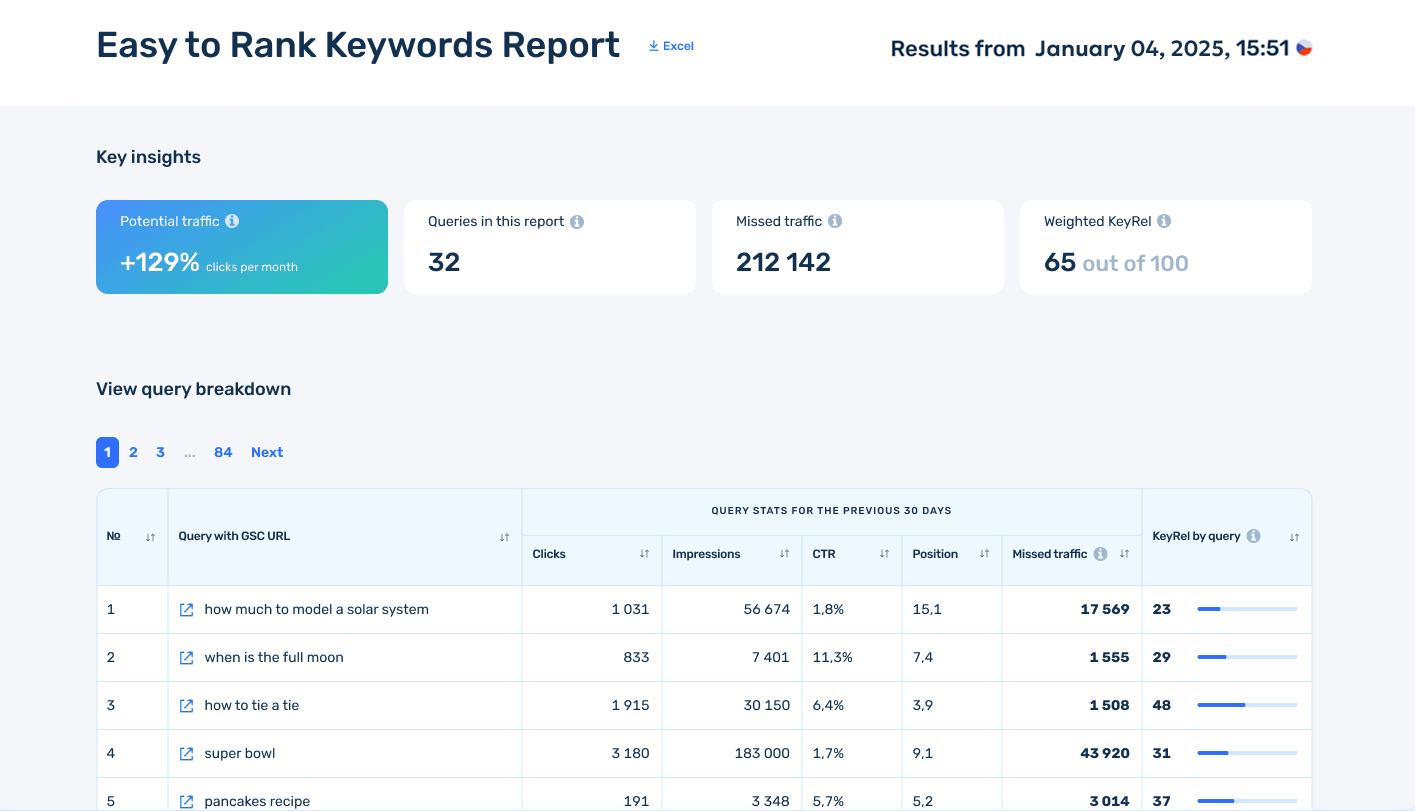
- SEO CTR Benchmarks Report: If you want to understand where your queries are losing performance without significant position changes, this report will help you identify weaknesses. It compares current clickability with past trends, analyses CTR anomalies, and uncovers problematic queries and ‘hidden gems.’ This report will highlight those queries suitable for restoring lost efficiency or becoming new growth points.
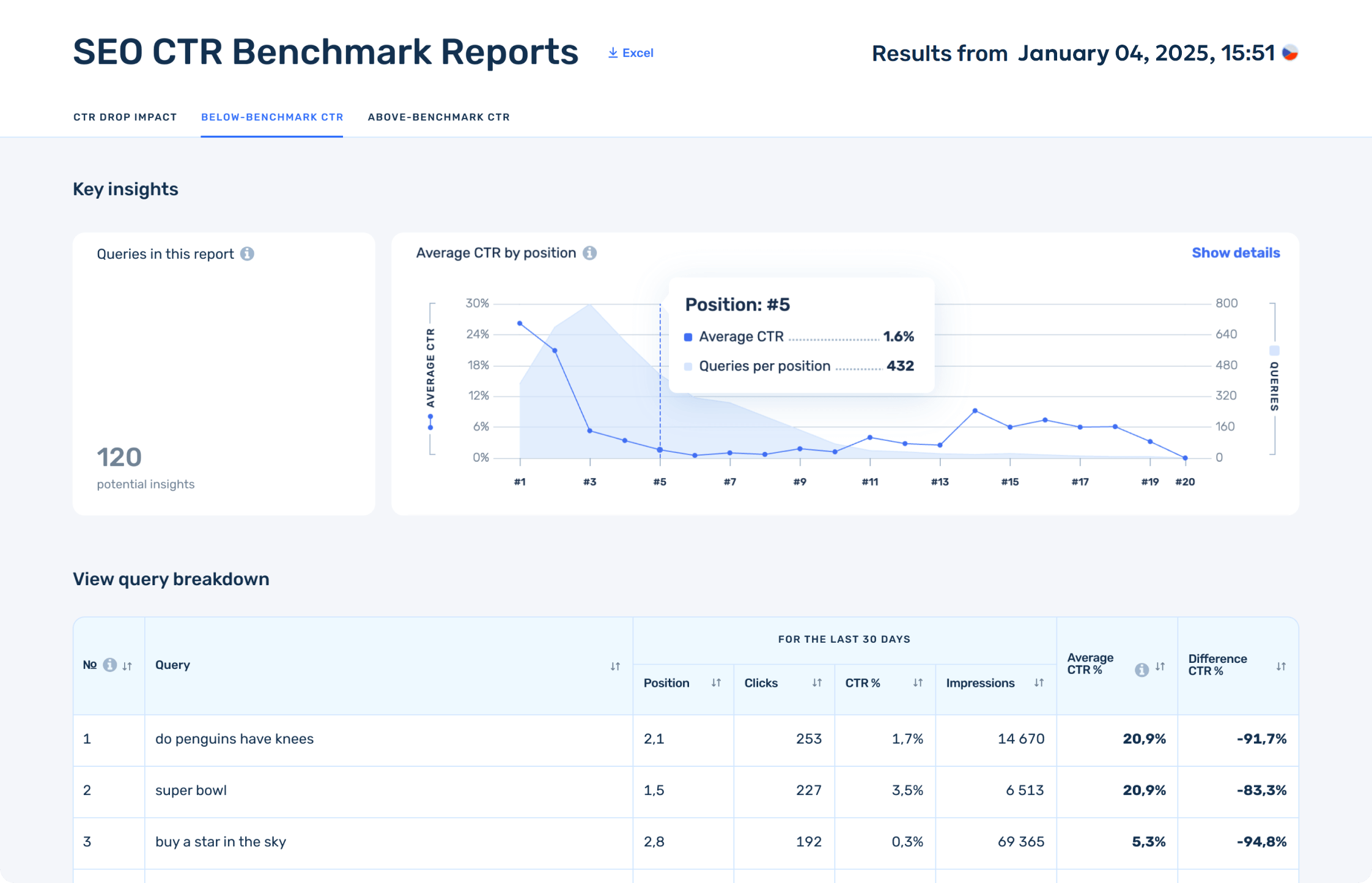
You can run the audit for all countries at once or for each country individually to get a local traffic analysis. Each run is free, and after collecting and processing historical data from the GSC, you’ll see a preview of the analysis. It will show how much traffic you are losing within each analysis (report) and overall—globally or in a specific region—compared to the last 30 days. It will also display the number of requests remaining in each report after sifting through the data.
To launch, you need only register, connect the right account with access to Google Search Console, select a site under ‘SEO Analytics Reports,’ and launch by country or total.
You may need to wait a little while, as there can be a large amount of data to process. The audit analyzes each query over the last 16 months, reviewing their monthly performance and content from the most relevant pages in Google’s rankings. You’ll be notified by email and in the interface when the audit is ready.
In just a couple of clicks, you could uncover hundreds or even thousands of queries worth focusing on—or you might not find much, but at least you’ll have peace of mind knowing you haven’t missed anything important. Pretty great, right?
It’s also great that you can run unlimited audits, as long as the data is sufficient to initiate the audit and doesn’t exceed the upper analysis limit. Credits are only charged for the audit results you’re interested in, and previews are free. If the data volume is too large, it’s better to use something other than GSC.
Bonus for Aleyda Solis subscribers
For Aleyda readers, we have prepared a special AleydaSolis20% coupon code that grants you 20% bonus credits when manually entered in the plan activation field after purchasing any paid plan on Buddler. This offer is available until March 1, 2025. Experience how convenient and efficient it is to work with a tool that allows you to look at organic traffic analysis and GSC data differently.
What’s next? A new look at traffic monitoring in Google Search Console
WAt Buddler, we’re about to launch a new organic traffic monitoring tool based on GSC data—designed to give you a fresh perspective on your site’s traffic. This tool will simplify how you interact with your data and offer advanced analysis features, such as:
- Saving and comparing two or even three segments side by side.
- Determining the percentage of data your traffic analytics are based on.
And much more to help you stay on top of significant changes, keep a pulse on your performance, and stay ahead of the competition.
If you want to get the most out of your Google Search Console data, try Buddler for free.
Thanks to Aleyda Solis
Aleyda, thank you for your article, which reminds us all that SEO is not only about optimization but also about the ability to analyze and adapt. I enjoy sharing your insights with our audience and seeing that our approaches are similar.
I hope readers enjoy Buddler, and there will be more free from SEOFOMO SEOs in the world.
🔥 A big hello from the entire Buddler team! ❤️
Relevant articles:
- Key Questions and Tools to Assess Your Site Organic Search Rankings Drops by Aleyda Solis
- Debugging drops in Google Search traffic by Google Search Central
- Organic Traffic Down? Don’t Panic! Here’s How to Find & Diagnose the Real Issue by Tory Grey
